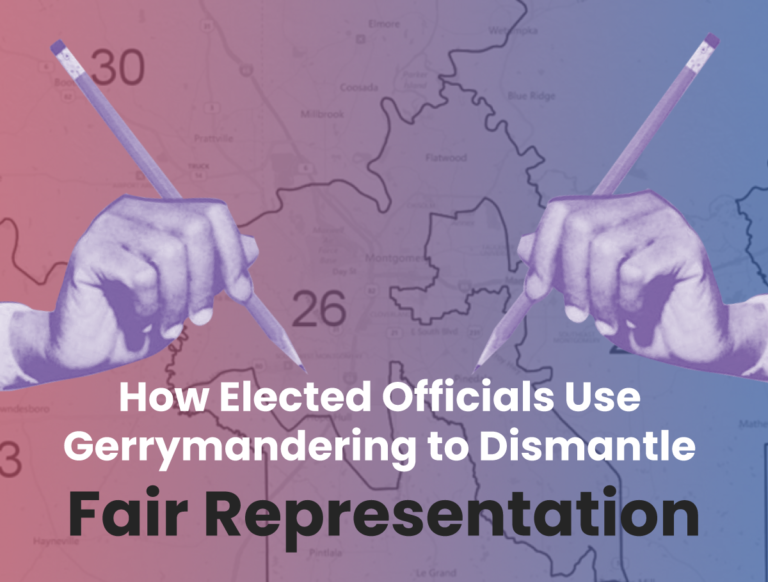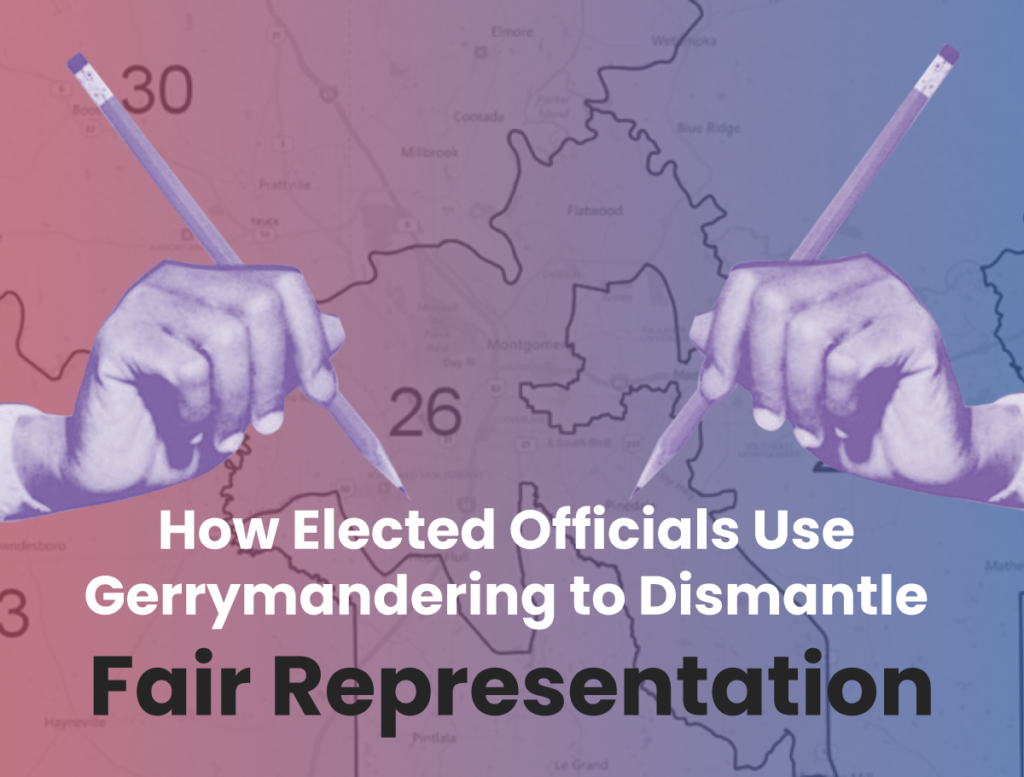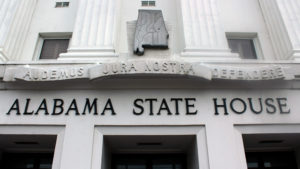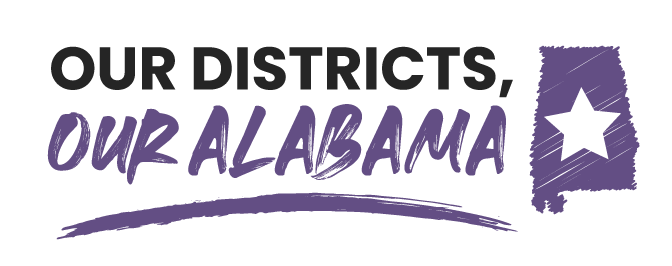The foundation of fair representation lies in an American process known as redistricting. Redistricting is how politicians draw district lines for representation at the federal, state, and local levels. The line drawing process is undertaken every ten years, and in theory, allows communities and residents to vote for representatives that understand and care about the issues that impact them. These issues include access to healthcare and education, public safety, or public welfare – for example, how we invest in education, public parks, libraries, or roads.
As early as 1812, government officials have used gerrymandering in the redistricting process to tilt political power in favor of a particular politician or political party. It has also been used to diminish the voting power of Black, Brown, and other minority communities. Gerrymandering is a dangerous byproduct of the necessary redistricting process. Currently, state legislatures or redistricting commissions are responsible for the process by which district lines are drawn. The way that district lines are drawn effectively determines our representation within every branch and level of the government.
In Alabama, the state legislature appoints a Reapportionment Committee to conduct the redistricting process. The Reapportionment Committee establishes the state’s redistricting guidelines that are approved by the state legislature. These guidelines must adhere to the 14th and 15th amendments to the U.S. Constitution, the Voting Rights Act of 1965, and the Alabama state constitution. However, these laws are sufficiently broad and subject to interpretation, clearing an easy path for manipulation by the party in power.
The two most commonly used techniques politicians use to consolidate their power over the communities they are supposed to represent are “packing” and “cracking.” Packing places all or a majority of ‘like-minded voters’ into a single district, consolidating their voting power to limit its reach. Cracking splits a specific voting block among multiple districts to ensure they are a minority in all of them, diluting their voting power.
The charts below show cracking (left under gerrymandering) and packing (right under gerrymandering) for two hypothetical voting blocs.
By doing this, elected officials sway representation to the detriment of targeted communities. Elected officials can target any community, but most commonly, they are composed of people who historically vote for one political party or Black, Brown, or other minority communities. In the South, in particular, gerrymandering has seen widespread use in undermining the ability of minority communities to receive fair representation.
You can advocate for your community and get involved in the line-drawing process by working with Alabama Election Protection Network here.











